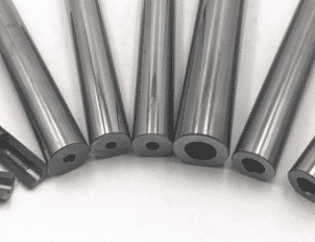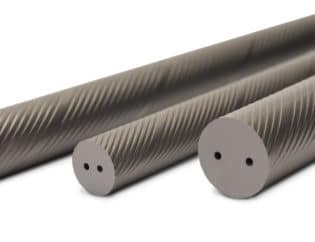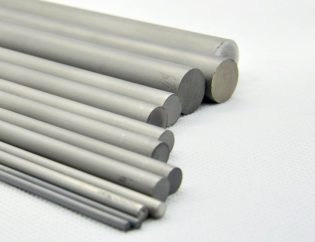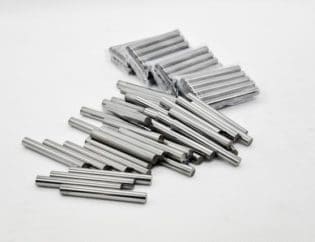Tungsten Carbide Rod
Tungsten carbide rods also called cemented carbide rods, are widely used for high-quality solid carbide tools such as milling cutters, end mills, drills, and reamers. It can also be used for cutting, stamping, and measuring tools. It is used in the paper, packaging, printing, and non-ferrous metal processing industries.
Carbide rods can be used not only for cutting and drilling tools but also for input needles, various roll wore parts, and structural materials. In addition, it can be used in many fields, such as machinery, chemical, petroleum, metallurgy, electronics, and defense industries.
Specialized in tungsten carbide round bars, with an outstanding product line of coolant and solid carbide rods, we manufacture and stock unground and ground carbide rods for you. Our h6 polished chamfered cutting tool blanks are the most popular.
Here you can check the 4 types of carbide rods: carbide extension shank, carbide rod blanks, carbide rod with coolant hole, and cutting tools blanks. We can also make carbide rod preformed products as per your requiements.
Raw Materials of Carbide Rods
Our grade coverage ISO K05 to K40, from machining aluminum, steel, non-ferrous metals, to titanium or we develop grade for your applications. Our 10% cobalt grade MT10S is widely used for machining aluminum and steel or general application. Our 12% cobalt grade MT12S is specially designed for machining stainless steel and our MT25S with 0.4um grain size is meant for high hardness processing. Thanks to our deep cooperation with Germany H.C.Starck, we use the best powder for carbide rod in the world for all our standard grades for carbide rod manufacturing.
| grade | MT09U | MT10S | MT12S | MT25S | MT06U | MT20.8 | |
| ISO range | K10-K20 | K20-K40 | K20-K40 | K20-K40 | K05-K10 | K40-K50 | |
| WC+other carbide | % | 91 | 90 | 88 | 88 | 93.5 | 85 |
| Co | % | 9 | 10 | 12 | 12 | 6.5 | 15 |
| WC grain size | μm | 0.4 | 0.8 | 0.6 | 0.4 | 0.6 | 0.8 |
| density | g/㎝³ | 14.5 | 14.42 | 14.12 | 14.1 | 14.85 | 13.95 |
| hardness | Hv30 | 1890 | 1600 | 1580 | 1750 | 1890 | 1350 |
| HRA | 93.5 | 91.5 | 91.2 | 92.5 | 93.5 | 89.5 | |
| transverse rupture strength | N/mm² | 3800 | 4100 | 4200 | 4400 | 3700 | 3800 |
| kpsi | 590 | 609 | 638 | 540 | 551 | 551 | |
| fracture toughness | Mpa.m½ | 10.2 | 14.2 | 14.7 | 13.5 | 10.1 | 17.5 |
| young’s modulus | kpsi | 86780 | 85360 | 80860 | 80000 | 91000 | 79086 |
| compressive strength | kpsi | 1145 | 1015 | 1010 | 1109 | 1156 | 957 |
Carbide rods are mainly used for drills, end mills, and reamer. It can also be used for cutting, stamping and measuring tools. It is used in the paper, packaging, printing, and non-ferrous metal processing industries. In addition, it is also widely used in the processing of high-speed steel tools, carbide milling cutters, carbide tools, carbide drills, high-speed steel, carbide tools, etc. Carbide rods can be used not only for cutting and drilling tools but also for input needles, various roll wore parts and structural materials. In addition, it can be used in many fields, such as machinery, chemical, petroleum, metallurgy, electronics and defense industries
Grade | Properties and applications |
MT09U | Ultra-fine grain WC with 9%Co Very high wear resistance and excellent deformation resistance High cutting speed milling, finishing For use on hardened steel, plastics, fibre reinforced materials, HRC55-65 |
MT10S | Ultra-fine grain WC with 10%Co Very high wear resistance and excellent deformation resistance High cutting speed milling&drilling For general usage and suitable for all kinds of material belowHRC45 |
MT12S | Submicron grain WC with 12%Co High toughness and wear resistance Specially designed for machining stainless steel For use on stainless steel, nickel-based alloys, titanium alloy and special alloy |
MT25S | Ultra-fine grain WC with 12%Co Very high toughness and high wear resistance Suitable for finishing processing and roughing of steels with hardness between 45 and 55HRC steels for surface treatments, nickel and nickel alloys |
MT06U | Submicron grain WC with 6% Co Very high wear resistance High cutting speed For drilling and milling of plastic composites, PCB, ceramics, woods and MDF |
MT20.8 | Submicron grain WC with 15%Co High strength and toughness High-speed punching For use on solid carbide punches |
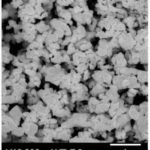 Ultra-fine grain cemented carbide is a high hardness, high strength and high wear resistance both carbide, and the processing of mutual adsorption – diffusion effect is small, suitable for processing heat-resistant alloy steel, titanium, high High strength non-metallic brittle materials and metal materials such as glass, marble, granite, Plastic reinforced glass fiberboard and other cutting and non-ferrous metals tungsten, molybdenum and other alloy processing.
Ultra-fine grain cemented carbide is a high hardness, high strength and high wear resistance both carbide, and the processing of mutual adsorption – diffusion effect is small, suitable for processing heat-resistant alloy steel, titanium, high High strength non-metallic brittle materials and metal materials such as glass, marble, granite, Plastic reinforced glass fiberboard and other cutting and non-ferrous metals tungsten, molybdenum and other alloy processing.
As the ultra-fine grain cemented carbide with high toughness and strength, high hardness and wear resistance, so as a cutting tool to obtain high-precision edge, allowing the use of large rake angle to ensure sharp blade edge. So that it can withstand a large cutting force, and can get a high finish of the machined surface.
It can improve the precision of the tool and the finish of the machined material by 1 ~ 3, especially in the processing of heat-resistant alloy, titanium alloy, chilled cast iron, and other aspects show good cutting performance. Ultra-fine grain carbide cutting tool processing high-strength steel, heat-resistant alloys, and stainless steel, life than P01 or K10 alloy more than doubled.
Such as Meetyou ultra-fine grain carbide cutting tool processing these materials than ordinary carbide cutting tool life is more than 10 times higher. The development of ultrafine grain cemented carbide has been developed to build the foundation of cemented carbide end mills and carbide twist drills.
Carbide end mills and twist drills are generally made of high strength, high hardness, ultrafine grain cemented carbide to ensure the cutting performance of the center edge. Carbide end mills are widely used in the mold industry (especially plastic mold industry), the automotive industry, IT and related industries. The plastic industry has a large number of pre-hardened HRC30-34 plastic mold steel as raw materials, in which the hardness of its machinability is poor, only the use of carbide end mills high-efficiency processing of good surface roughness of high precision mode Cavity.
At present, carbide end mills have been used in automobile production lines, IT and related industries extensive use of Ф0.1 ~ 8mm overall carbide end mill processing glass fiber reinforced printed circuit board around and micro-processing.
Solid Carbide Twist Drill is rapidly evolving to meet the high efficiency of the automotive industry and the processing of plastic reinforced glass fiber boards (PCBs) in the IT industry. Drilling on the PCB, the hole of the hole without glass fiber hair, high-speed steel twist drill cannot meet the requirements, and must use the overall carbide twist drill. With the rapid development of electronics, information and other industries, the demand for carbide twist drill will be growing.
Carbide Rods
Manufacturing Methods
Extrusion
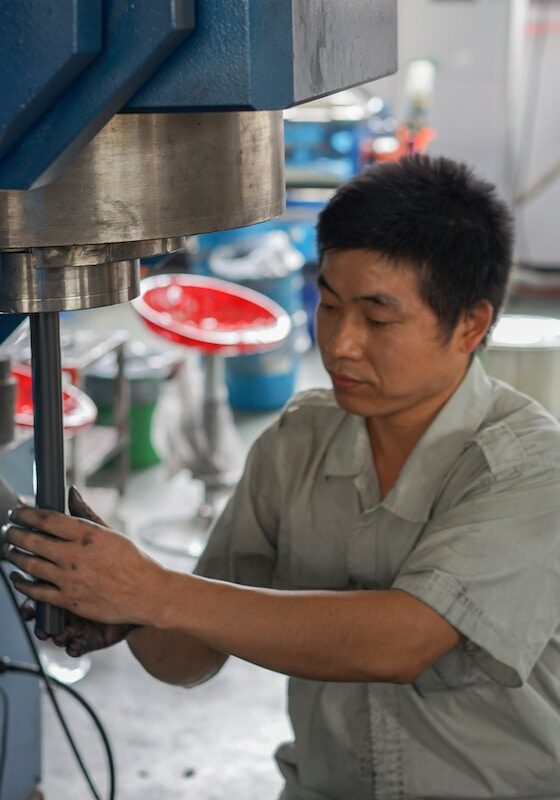
Extrusion is the most popular method of producing carbide rods. It is a very practical way to manufacture long carbide rods like 330mm.310mm and 500mm, etc. However, its time-consuming drying process is the weakness that we have to pay attention to.
Automatic Press
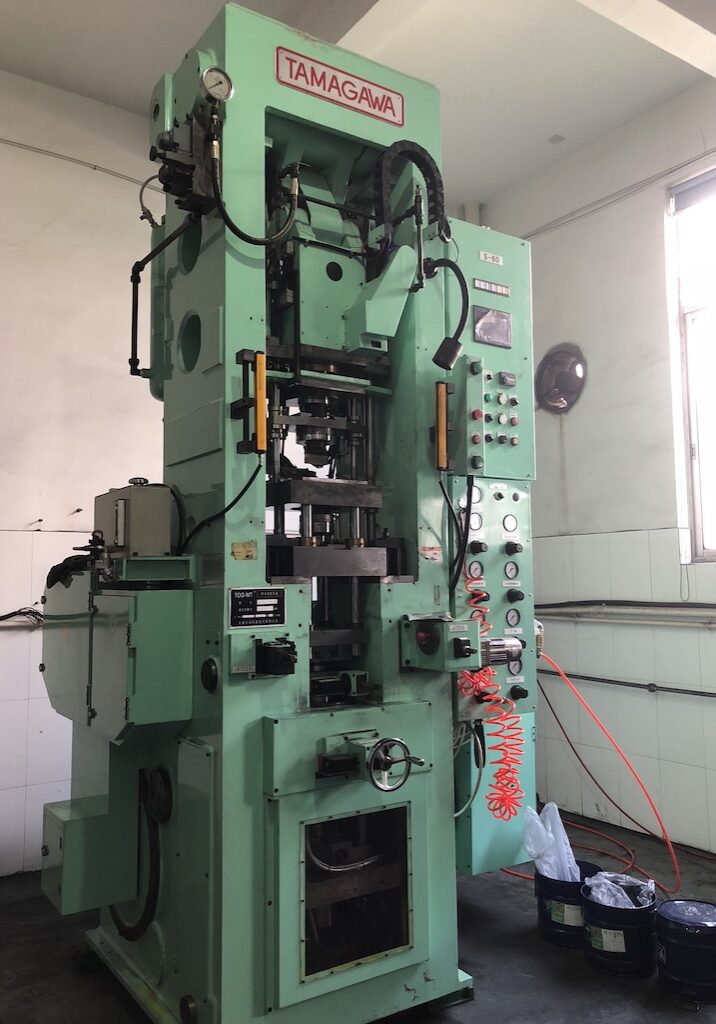
Automatic pressing is the most effective ways to press short sizes like 6*50,10*75,16*100, etc. It can save cost from cutting carbide rods and it doesn’t need time to dry. So the lead time is faster than extrusion. On the other hand, long rods cannot be manufactured by this method.
Cold Isostatic Press
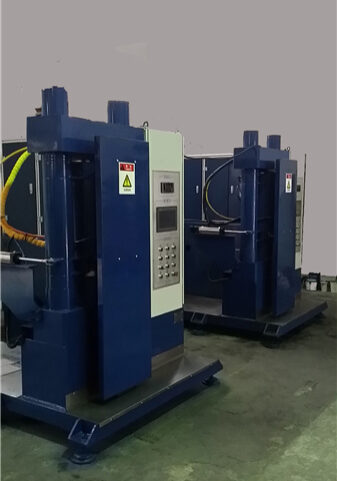
Cold isostatic press(CIP) is the latest technology of making carbide rods. Because it can make long bars like 400mm but it doesn’t require wax like extrusion, so it doesn’t need time to dry, either. This is the best option when making big diameters like 30mm and 40mm.
Sintering
HIP.
The advanced computer-controlled HIP furnaces are applied to provide more pressure during the sintering process in order to get denser structure.
Powder
Excellent.
Thanks to our deep cooperation with Germany H.C.Starck, we use the best powder for carbide rod in the world for all our standard grades for carbide rod manufacturing.
Production
Fast.
Three different compaction methods, including extrusion, automatic press, and cold isostatic press are used for the maximum efficiency of carbide rod manufacturing.
Ready to find out more?
Email us today for a free quote!
